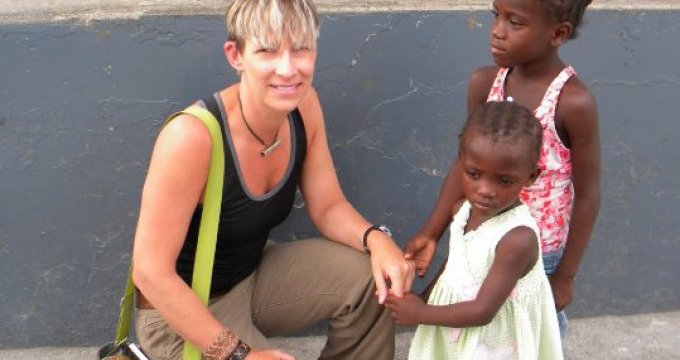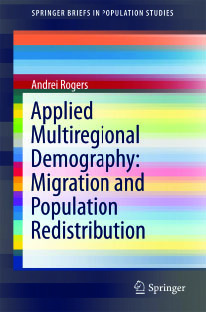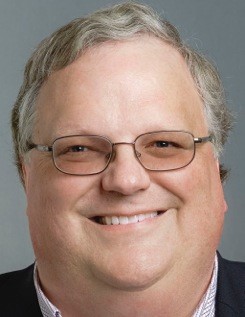A new research article by Nnenia Campbell, Lucy McAllister and Liam Downey, “Invisible While in Plain Sight: The World Bank in the New York Times”, has been accepted for publication in the journal, Sociology of Development.
News
All news items, blog posts, and feature stories.
Hazards Library Online Catalog Up and Running
The new Natural Hazards library catalog interface is now online! It’s got lots of great new features and the Hazards Center and the IBS tech team have worked super hard to create it. Read more here: http://www.colorado.edu/hazards/dr/archives/dr651.html#three
Access the library directly here: http://hazlib.colorado.edu/
Community Resilience Planning Important for Natural Hazards Recovery
October 30, 2015 • Social Sciences, Outreach
If you’re not directly involved in the realm of natural and human-caused disasters, a small news item may have escaped notice last week: The U.S. Commerce Department’s National Institute of Standards and Technology’s publication of its first comprehensive community resilience planning guide.
But for Liesel Ritchie, associate director of the Natural Hazards Center at the Institute for Behavioral Science at CU-Boulder, the announcement marked an important milestone in helping policymakers and community leaders understand the importance of social science in disaster planning.
Ritchie became involved with the community resilience project as one of nine fellows one year ago. Her job was to provide valuable perspective on the social dimensions of disaster – something that had not previously been extensively covered in the guide.
The most recent Community Resilience Planning Guide for Buildings and Infrastructure Systems was created to help U.S. communities better withstand and rebound from the shocks of severe weather, earthquakes, and other natural and human-caused hazards.
“I helped to facilitate understanding of community processes and how different social institutions—including family, economic, government, health, education, community service, religious, cultural and media organizations—rely upon the built environment and infrastructure systems on a day-to-day basis,” Ritchie said.
She also highlighted resilience-related concerns specific to vulnerable populations, including the elderly, people living in poverty, racial and ethnic minority groups, people with disabilities and those suffering from chronic illness.
The guide was issued on the third anniversary of Hurricane Sandy, which killed 157 people in the U.S. and wreaked havoc and destruction from Maine to North Carolina. It is aimed at community leaders in both the public and private sectors, and lays out a practical six-step process that communities can follow to develop resilience plans to help them prepare for hazards, adapt to changing conditions and withstand and rapidly recover from disruptions.
“This work is important because it is one of the first resilience efforts to provide a systematic approach for communities to assess both their social institutions and built environment in a coordinated way,” Ritchie said.
The guide could prove useful to Colorado, a state that faces numerous hazards ranging from flooding to wildfires.
“Given the breadth of impact extreme weather is having on American lives and commerce, it is clear that we have to do more to mitigate its effects,” said U.S. Commerce Secretary Penny Pritzker. “Improving local resilience efforts are a challenge that every city should address, and this planning guide can assist communities in developing preparedness plans to prevent hazards from becoming disasters.”
To access the guide, an FAQ, and an overview document called Guide at a Glance, go to http://www.nist.gov/el/resilience/guide.cfm. To read a feature story on the planning guide and other complementary NIST community resilience efforts, go to http://nist.gov/el/helping-to-build-a-nation-of-resilient-communities.cfm.
Andrei Rogers Migration Book Published
Andrei Rogers' latest book has just been published: "Applied Multiregional Demography: Migration and Population Redistribution", (Dordrecht: Springer), 2015.
This book reconsiders conclusions reached in the literature
regarding several fundamental common sense demographic
questions in migration and population redistribution, including:
Are the proximate sources of urban population growth mostly
due to migration or natural increase? Is it mostly migration or
“aging-in-place” that has been driving Florida’s elderly
population growth? Do the elderly return “home” after
retirement more than the non-elderly do? Are the migration and
settlement patterns of the foreign-born different from those
of the native-born? Do simple poulation projection models
outperform complex ones? Does longer life lead to longer
ill-health?
For each demographic question it reconsiders, the book
illustrates how an inappropriate model specification can bias
findings to favor a possibly incorrect conclusion. It shows how
a multiregional analysis can better illuminate the dynamics that
underlie the observed population totals and lead to a more
informed conclusion.
Jimi Adams Gives a Talk at University of Florida Informatics Institute
“A Multi-level Life Course Model of Boundaries in Knowledge Production”
Projects spanning multiple disciplines (e.g., interdisciplinary, multidisciplinary or transdisciplinary research) have been examined and evaluated in ways that are substantially under‐theorized. We propose a dynamic model of how disciplinary boundaries are constructed, maintained and crossed, as a means to identify how research fields change as they develop. This model offers three improvements over previous research on disciplinarity by: (1) explicitly identifying the dimensions along which disciplinary integration takes place; (2) accounting for temporal dynamics in the evolution of research fields across those dimensions by adopting a life course perspective of change; and (3) resolving tensions in previous models by accounting for disciplinary (lack of) integration that varies across multiple levels. To empirically investigate this model, we employ a combination of bibliographic coupling networks and topic models of scientific abstracts. We identify observed trajectories within the model from research on demography, religion and HIV/AIDS. These examples demonstrate how the proposed model advances both our understanding of interdisciplinary dynamics, and the ability to evaluate their successes.
– https://www.ctsi.ufl.edu/2015/10/20/ctsi-team-science-talks-oct-26-and-27/
John O’Loughlin Awarded Gold Medal from Russian Geographical Society
By Elizabeth Lock
John O’Loughlin, CU-Boulder professor of geography and faculty associate in the Institute of Behavioral Science, has become the first foreigner in more than 100 years to win the Semenov-Tyan-Shansky gold medal for research on Russia.
It is the highest research award of the Russian Geographical Society typically targeted toward Russian and, previously, Soviet scholars working in the area of the former Soviet Union.
“This honor is an unusual one because of the political sensitivities between the U.S. and Russia right now,” said O’Loughlin, whose research in 2014 was featured in a New York Times article.
"This very much goes against what a lot of people think is happening in Russia, of increased control and isolation.”
O’Loughlin studies the political geography of the former Soviet Union including post-conflict relations among different ethnic groups in the north and south Caucasus Mountain region and de facto, or separatist, states.
“It’s very much field-based research on ordinary people living in these war zones and what they think and what their lives are now like,” said O’Loughlin.
Supported by continuous finding from the National Science Foundation, key to his 25-year body of work is the collaboration he’s been able to cultivate with Russian scholars. He also thinks it’s part of why he won the medal.
“I think it’s a signal that they don’t want to put off contact with foreign researchers and according to the president of the society, they want to encourage collaboration with foreign scholars,” said O’Loughlin. “This very much goes against what a lot of people think is happening in Russia, of increased control and isolation.”
The Semenov medal was personally presented to O’Loughlin by Sergey Shoigu, president of the society, at a formal banquet in honor of the 170th anniversary of the Russian Geographical Society in Moscow in late August.
“I actually was quite surprised by this whole thing,” O’Loughlin said.
Elizabeth Lock is an editor at the CU Office of News Services.
Hispanic Health Outcomes Worsen with More Time in U.S.
The mystery of why health outcomes deteriorate the longer Hispanic immigrants are in the U.S. cannot be blamed on America’s fast food culture alone.
A new study, published in a recent issue of the International Migration Review, finds that increased mortality rates for both foreign- and U.S.-born Hispanics cannot solely be blamed on “acculturation,” or the adoption of the host society’s mainstream values, attitudes, sentiments, behaviors and practices.
“Our study finds that worsening health of Hispanic immigrants is overly attributed to acculturative behavior,” said lead study author Fernando Riosmena, a professor in the CU-Boulder Institute of Behavioral Science and Department of Geography. “Acculturation cannot be the only or even the main explanation behind the deterioration of health.”
Worsening immigrant and Hispanic health outcomes are – somewhat ironically – tied to successful adaptation to U.S. society. Although immigrants and, to a lesser extent, U.S.-born Hispanics in the U.S. are generally healthier than non-Hispanic whites in terms of chronic health as well as mortality, this advantage seems to deteriorate the longer immigrants remain in the U.S.
Thus far, researchers have largely pointed a finger at “acculturative behavior” and the adoption of unhealthy lifestyles. However, other forces are at work that reinforce the overall negative effects of adapting one’s diet, substance use or and physical activity patterns to those prevalent in the U.S., Riosmena said. In addition, the socioeconomic and legal vulnerability of many Latin American migrants is linked to barriers to quality healthcare, a key factor in mortality rates.
While acculturative behavior may lead to unhealthy weight gain and other risk factors associated with worse chronic health, researchers found that the health erosion immigrants and their descendants experience over time is also related to broader processes of “cumulative disadvantage.”
This is defined as the process by which socioeconomic disadvantage and discrimination accrue and compound over a person’s lifetime. For the immigrant generation, cumulative disadvantage can also refer to the buildup of health problems associated with vulnerable socioeconomic and legal trajectories that may not be corrected by eventual socioeconomic improvements and legalization, Riosmena said.
The paper also asserts that two measures of immigrant adaptation – acquired citizenship and language of interview – provide indirect yet compelling evidence suggesting negative acculturation may not be the main explanation for declining health outcomes over time.
After controlling for duration of stay and citizenship status – markers that Riosmena and colleagues deem as indicative of socioeconomic and legal cumulative disadvantages – the risk of death among Hispanics living in households where the survey was answered in Spanish increases to 14 percent and is statistically significant.
Researchers also found that the ability and willingness to naturalize may be a protective factor – at least for women. The study found that naturalized citizen women have 16 percent lower mortality rates than their non-naturalized female counterparts, a difference that is statistically significant. Male naturalized citizens have 2 percent higher risks of death than their non-citizen counterparts, a difference that is not statistically significant.
Riosmena and colleagues are hopeful their research could lead to improved immigration policy that takes a broader view of immigrant health outcomes vs. a focus on individual behavior among immigrants and Hispanics.
Co-authors include Richard Rogers, of CU-Boulder, Bethany Everett of the University of Illinois – Chicago, Jeff Dennis, now of the Texas Tech University Health Sciences Center.
Contact:
Fernando Riosmena, (O) 303-492-1476
fernando.riosmena@colorado.edu
Julie Poppen, CU-Boulder media relations, (O) 303-492-4007 (M) 720-503-4922
julie.poppen@colorado.edu
School Safety Initiative Gets $6.2 Million Infusion
October 7, 2015 • CU Boulder News • Social Sciences
According to Beverly Kingston, the nation has the knowledge it needs to prevent youth violence, but "we have yet to put everything we know into action."
A new $6.2 million grant from the National Institute of Justice will help 32 Front Range middle schools do just that, said Kingston, director of the CU-Boulder Center for the Study and Prevention of Violence in the CU-Boulder Institute of Behavioral Science and the grant’s principal investigator.
“Schools and districts still lack the infrastructure and a roadmap to support their work," Kingston said. "We intend to provide those key supports.”
The Center for the Study and Prevention of Violence will lead the new $6.2 million effort to promote school safety.
The four-year grant will allow researchers to evaluate the feasibility and impact of the Safe Communities Safe Schools model whose goal is to reduce youth violence and problem behavior and increase pro-social behavior in select Colorado schools.
The initiative builds and improves upon the center’s original Safe Communities Safe Schools initiative launched in 1999 with the Colorado Attorney General’s Office after the Columbine High School shootings.
Middle school is a critical time to reinforce effective violence-prevention efforts because the risk of problem behavior, such as violence and suicide, dramatically increases with the onset of adolescence, Kingston said.
The Safe Communities Safe Schools model features:
- • Engagement of a multidisciplinary school team and the development of key community partnerships committed to data-based decision-making, cultural responsiveness, fair and consistent disciplinary practices and school-wide change;
- • Implementation of an effective intelligence-gathering system to collect and interpret data points at the school pertaining to climate, attendance, discipline, bullying, violence, victimization and mental health issues; and
- • Development of an evidence-based, multi-tiered system of support including a school-wide approach to social and emotional learning and adequate staff capacity to identify and address student needs at all levels.
Under the grant, eight schools selected through an application process will be added each year.
Monica Fitzgerald, a clinical psychologist specializing in childhood trauma and socio-emotional development and project co-investigator, said the project is unique because it addresses school safety at the micro and macro levels.
“It takes an evidence-based holistic approach to building awareness and skills among administrators, teachers, students, families and school staff to tune in to students’ emotional and behavioral health and sensitively respond to youth who are struggling," Fitzgerald said.
The project will embed social and emotional programming into everyday school activities to teach students how to recognize and manage emotions, develop positive and caring relationships, solve problems effectively, behave ethically and avoid negative behaviors. The project also supports school staff to gain skills to recognize their reactions and emotions and learn stress reduction strategies.
As part of the project, Safe2Tell – a state-funded program run by the Colorado Attorney General’s Office that allows young people to report threats anonymously – will provide training to communities, students and educators to promote bystander reporting of safety concerns.
Co-principal investigators Sabrina Arredondo Mattson, Monica Fitzgerald and Kimberly Shipman, also researchers at the Center for the Study and Prevention of Violence, will collaborate with a multi-disciplinary research team of experts and institutions. This includes Thomas Dishion, a psychology professor at Arizona State University, senior researcher Allison Dymnicki and principal researcher Elizabeth Spier of the American Institutes of Research, the Boulder-based PassageWorks Institute and the Colorado Attorney General’s Office.
“Middle school is a time when kids can really struggle,” Kingston said. “We want to help foster a nurturing climate that really supports kids so they can stay on track and reach their potential. This is way bigger than school safety. We are setting kids up for the lives they are supposed to lead. We are setting them up to thrive.”
– See more at: http://www.colorado.edu/news/features/school-safety-initiative-gets-62-million-infusion#sthash.IGlDLUuA.dpuf
New Director for Computing and Research Services
Jim Dykes is the new Director of Computing and Research Services (CRS) at IBS. Jim was Senior Director of Engineering at Seagate Technology; prior to joining Seagate, he held a variety of positions at Dartmouth College, including jobs as Director of Informatics at the Dartmouth Medical School and Director of Data Analysis in the Center for Evaluative Clinical Sciences. Jim has a background in statistics and computer science that will help take IBS to new successes.
Jim succeeds Jani Little, who has retired as head of CRS but continues with her research and with development of our proposed Federal Statistical Research Data Center.









